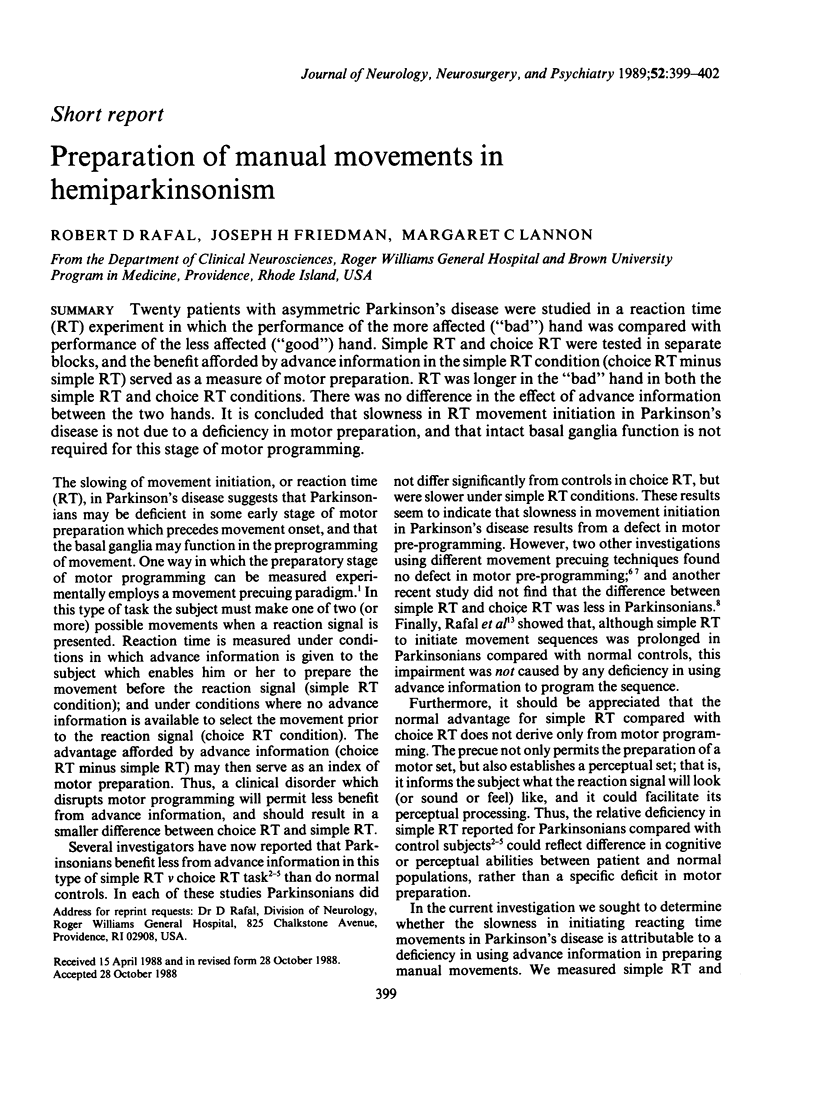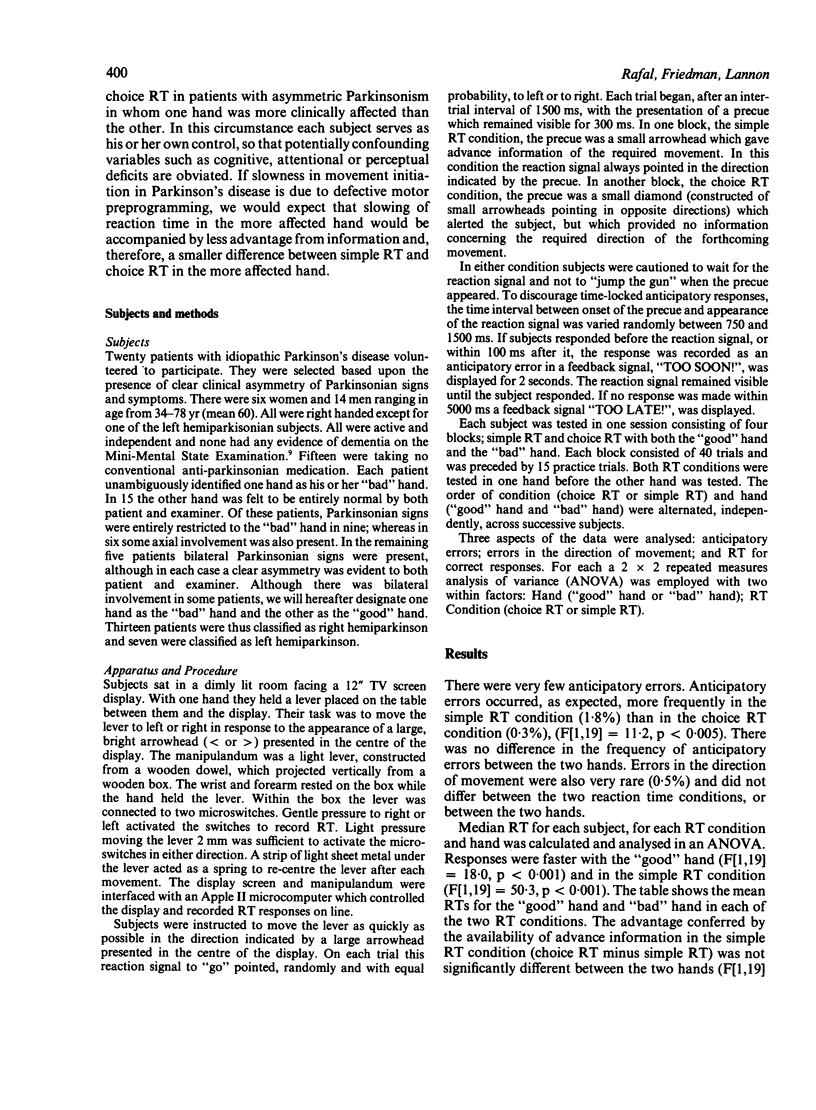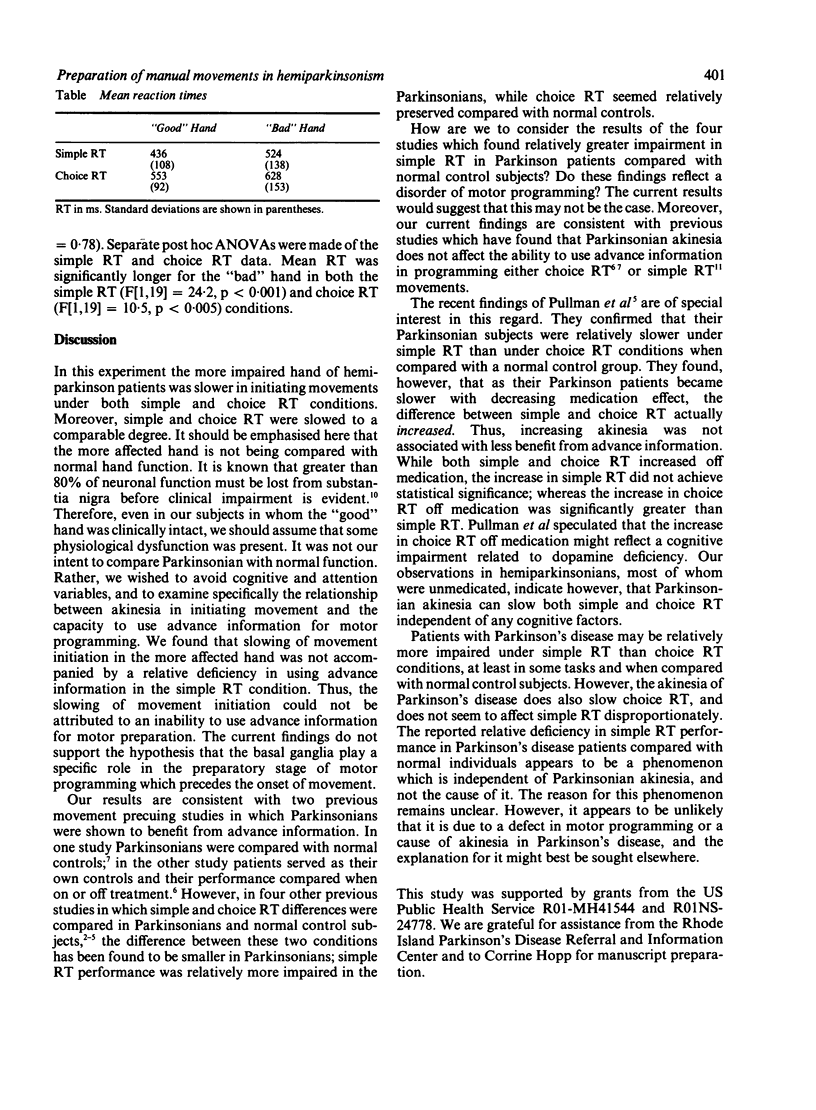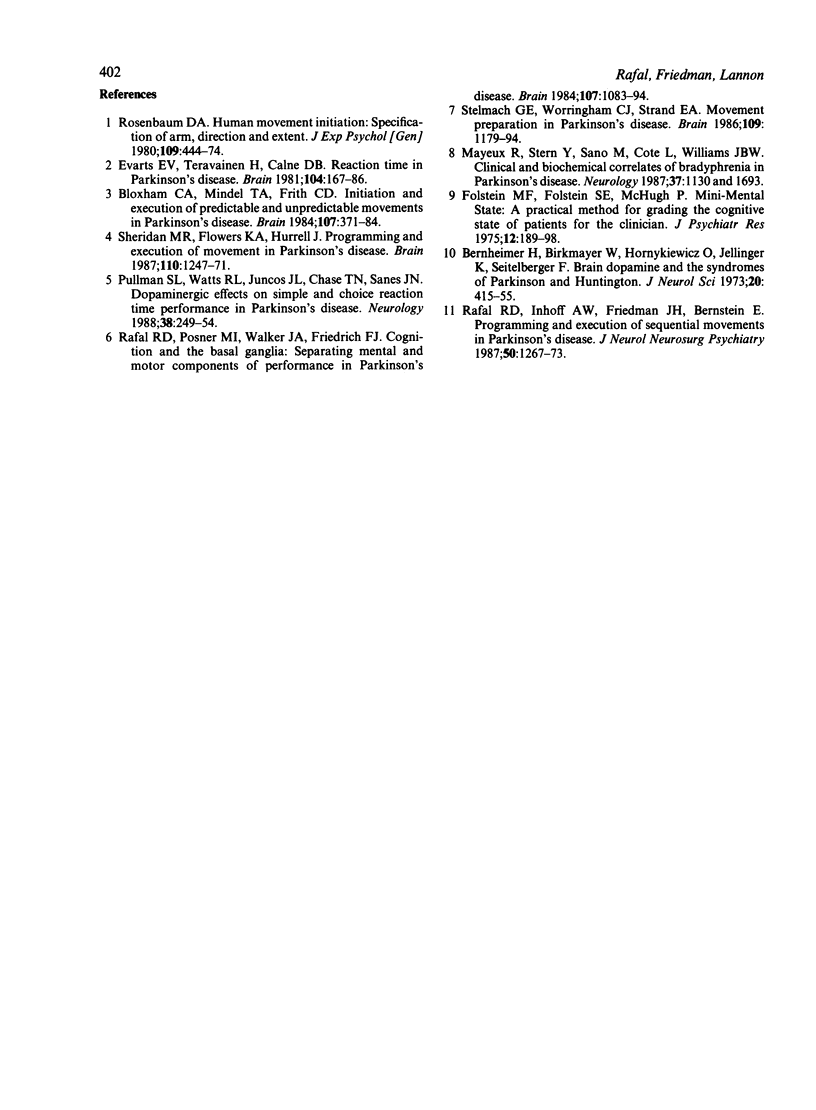Abstract
Twenty patients with asymmetric Parkinson's disease were studied in a reaction time (RT) experiment in which the performance of the more affected ("bad") hand was compared with performance of the less affected ("good") hand. Simple RT and choice RT were tested in separate blocks, and the benefit afforded by advance information in the simple RT condition (choice RT minus simple RT) served as a measure of motor preparation. RT was longer in the "bad" hand in both the simple RT and choice RT conditions. There was no difference in the effect of advance information between the two hands. It is concluded that slowness in RT movement initiation in Parkinson's disease is not due to a deficiency in motor preparation, and that intact basal ganglia function is not required for this stage of motor programming.
Full text
PDF



Selected References
These references are in PubMed. This may not be the complete list of references from this article.
- Bernheimer H., Birkmayer W., Hornykiewicz O., Jellinger K., Seitelberger F. Brain dopamine and the syndromes of Parkinson and Huntington. Clinical, morphological and neurochemical correlations. J Neurol Sci. 1973 Dec;20(4):415–455. doi: 10.1016/0022-510x(73)90175-5. [DOI] [PubMed] [Google Scholar]
- Bloxham C. A., Mindel T. A., Frith C. D. Initiation and execution of predictable and unpredictable movements in Parkinson's disease. Brain. 1984 Jun;107(Pt 2):371–384. doi: 10.1093/brain/107.2.371. [DOI] [PubMed] [Google Scholar]
- Folstein M. F., Folstein S. E., McHugh P. R. "Mini-mental state". A practical method for grading the cognitive state of patients for the clinician. J Psychiatr Res. 1975 Nov;12(3):189–198. doi: 10.1016/0022-3956(75)90026-6. [DOI] [PubMed] [Google Scholar]
- Mayeux R., Stern Y., Sano M., Cote L., Williams J. B. Clinical and biochemical correlates of bradyphrenia in Parkinson's disease. Neurology. 1987 Jul;37(7):1130–1134. doi: 10.1212/wnl.37.7.1130. [DOI] [PubMed] [Google Scholar]
- Pullman S. L., Watts R. L., Juncos J. L., Chase T. N., Sanes J. N. Dopaminergic effects on simple and choice reaction time performance in Parkinson's disease. Neurology. 1988 Feb;38(2):249–254. doi: 10.1212/wnl.38.2.249. [DOI] [PubMed] [Google Scholar]
- Rafal R. D., Inhoff A. W., Friedman J. H., Bernstein E. Programming and execution of sequential movements in Parkinson's disease. J Neurol Neurosurg Psychiatry. 1987 Oct;50(10):1267–1273. doi: 10.1136/jnnp.50.10.1267. [DOI] [PMC free article] [PubMed] [Google Scholar]
- Rafal R. D., Posner M. I., Walker J. A., Friedrich F. J. Cognition and the basal ganglia. Separating mental and motor components of performance in Parkinson's disease. Brain. 1984 Dec;107(Pt 4):1083–1094. doi: 10.1093/brain/107.4.1083. [DOI] [PubMed] [Google Scholar]
- Rosenbaum D. A. Human movement initiation: specification of arm, direction, and extent. J Exp Psychol Gen. 1980 Dec;109(4):444–474. doi: 10.1037//0096-3445.109.4.444. [DOI] [PubMed] [Google Scholar]
- Sheridan M. R., Flowers K. A., Hurrell J. Programming and execution of movement in Parkinson's disease. Brain. 1987 Oct;110(Pt 5):1247–1271. doi: 10.1093/brain/110.5.1247. [DOI] [PubMed] [Google Scholar]
- Stelmach G. E., Worringham C. J., Strand E. A. Movement preparation in Parkinson's disease. The use of advance information. Brain. 1986 Dec;109(Pt 6):1179–1194. doi: 10.1093/brain/109.6.1179. [DOI] [PubMed] [Google Scholar]


